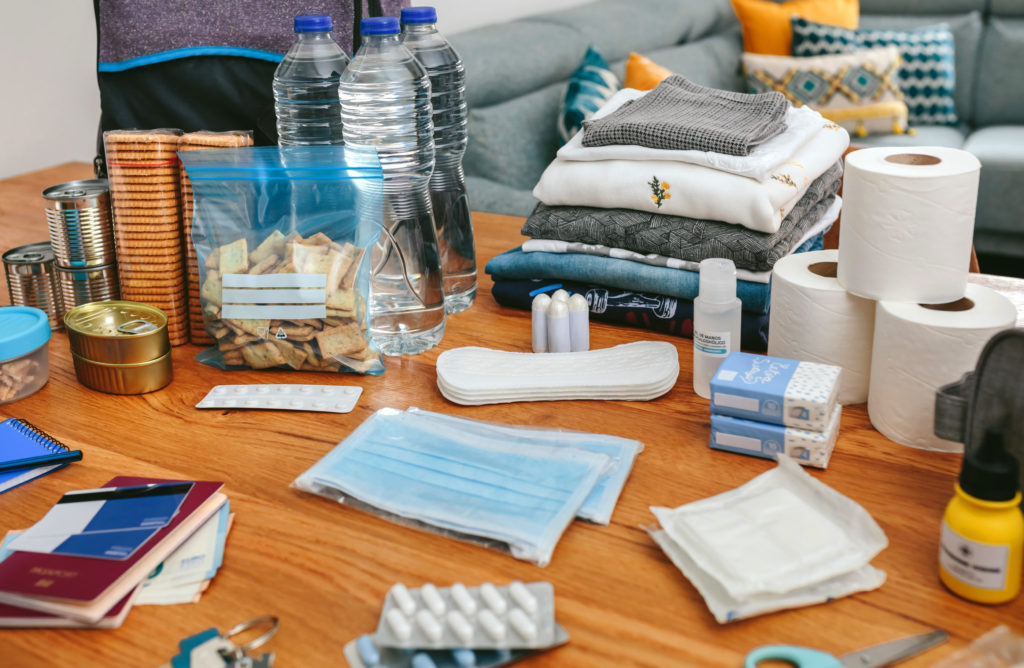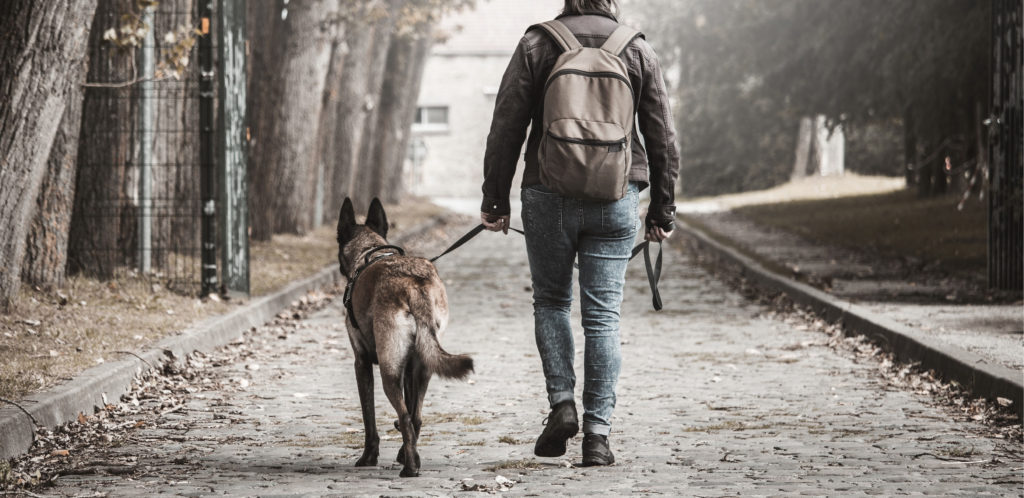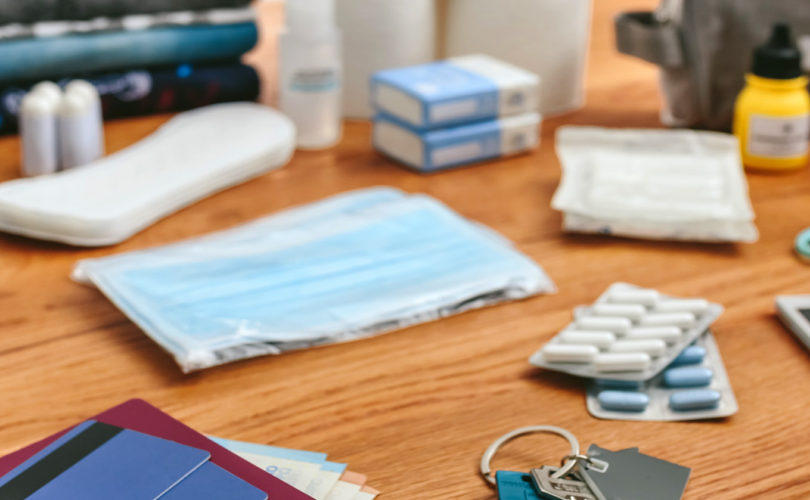When an emergency arises, having a plan and the necessary supplies are the most important resources. Whether it is a natural disaster, a terrorist attack, home fires, nuclear power plant accidents, blackouts, or having to evacuate during wartime, being prepared includes having a kit and plan ready prior to the incident. A survival kit has many layers and can vary depending on the emergency. Below is an outline of how to be as prepared as possible for the worst-case scenario.
Everything You Need for an Emergency Kit
The resources available are going to vary slightly based on where you live, but this blog will give you a general idea of everything you will need and what would be nice to have.
Premade and Custom Kits
Depending on where you live and what emergency scenarios are most likely to happen, a pre-made kit may be all you need. However, these kits are often designed for a single person, or fewer people than you need to account for, or are for a specific purpose, such as just being first aid supplies with no food. For instance, our Bug Out Survival Kit has enough food and water for a single person to last about three days, or two people for half the time, but only has personal hygiene kit for a single person. The best option would be to either buy multiple pre-made survival kits and add the extra necessities like emergency food rations or use the pre-made kits as a reference and buy all the supplies separately.
How Long Should You Prep For?
The Red Cross says you should prepare supplies for at least three days in an evacuation scenario and up to two weeks for hunkering down at home. Humans can only last about three days without water, so it is best to have extra and to make sure the water lasts as long as possible. You may not need the full gallon every day, or you may be able to drink a little less for rationing purposes, depending on your body.
As for food, there is a wide range of time a person can last without proper, or any, nourishment, and it all comes down to water, environment, and the body. There have been cases of people surviving for months without food and cases where people only last a couple days. Overall, as long as you have water, the 2,500 calories won’t be absolutely necessary.
Necessary Emergency Items
The following list has been created from information gathered from The Red Cross, FEMA, and the U.S. Department of Homeland Security, all of which have online resources available. Many of the listed items can be found here.
Water – The most crucial item. Prepare one gallon per person per day, plus some for sanitation. People can only last about three days without water, and that time shortens drastically depending on circumstances such as heat or movement/involuntary exercise needed for survival. Water purification tablets are also great tools if you run out of clean water.
Food – The second-most important item, food gives us energy and keeps our brains functioning properly. In emergency situations, critical thinking can be a lifesaver.
First Aid Supplies – Emergency situations have an extremely high likelihood of causing injuries, so preventing infections and bleeding will be the difference between life and death. An emergency oxygen kit can also be a lifesaving tool in situations where air quality is compromised or someone is experiencing breathing difficulties.
Sanitary and Hygiene Supplies – Soap, tampons/pads, etc.—having these on hand can greatly reduce the risk of someone getting sick or getting an infection.
Medications – Keeping your body as close to normal as possible is crucial. Even if the medicine isn’t something life-saving like insulin, withdrawals, behavioral changes, etc. can deplete resources, reduce morale, and/or prevent critical thinking.
Identification – Identification is always helpful, and necessary in evacuation scenarios.
Clothes and Blankets – Keeping yourself warm is very helpful for survival. Even in areas with warm climates, the nights can be cold, and you probably won’t have access to power. Don’t overpack clothing; save space for single-use items. You can always wear the same clothes for multiple days. Emergency blankets are compact, light, and very warm.
Electronics – Battery-powered and hand-crank radios will be your best resources for getting information. Bring portable chargers and wall chargers in case electricity is available.
Cash – Cash may be the only accepted form of payment in an emergency scenario.

Map – Physical maps don’t require electricity or a wireless connection to function.
Tools – Depending on the situation, you may need a wrench or pliers to shut off utilities. Multi-tools are useful in lots of situations. Can openers are necessary for canned food.
Camping Supplies – Tents, sleeping bags, med module, portable propane burners, module refills, bls bag and solar ovens provide comfort and help protect against the elements.
Matches and lighters – Being able to start a fire can be the difference between life and death in the cold. Fires can also be used to signal help.
Whistles – Whistles are a great way to attract attention over great distances without having to scream or yell.
Light Sources – Flashlights, lanterns, glowsticks, and flares are all great ways to navigate in the dark and attract attention.
Create a List of Emergency Info
Everyone in your survival circle needs to know the plan.
Have a dedicated meeting point in case someone gets separated.
Make sure the emergency supplies are easy to access and everyone knows where they are.
Have everyone know where emergency shelters are or how to find them. FEMA has a mobile app that locates emergency shelters in your area.
Know basic first aid and survival techniques.
Know the contact information for someone local who may be able to help.
Have a Plan for Your Vehicle
Personal transportation is a great resource. A vehicle can let you transport way more supplies without having to carry them. Make sure you have enough fuel and that your vehicle will be able to make it to the destination. In some cases, when the emergency shelter is close or you must navigate roads that are notorious for terrible traffic, it may be better to travel a little lighter and walk or ride a bicycle. In an emergency, almost everyone is going to try and evacuate or get to shelter as quickly as possible, and this will result in a lot of traffic, so if you do use a vehicle, put as many people in it as possible.
What About Pets?
Pets are part of the family too and deserve to survive an emergency. Some emergency shelters may not allow pets, and knowing where you can go to keep your friend safe is important. Make sure to pack supplies, especially food and water, for them as well.

Takeaway
The most important things for emergency preparedness are knowledge, food, and water. Having those three things greatly increases your chance of survival, and any of the other equipment will only serve to further increase those chances.
References
https://www.ready.gov/kit
http://www.ready.gov/evacuation
https://www.fema.gov/blog/10-items-include-your-emergency-kit
https://www.redcross.org/get-help/how-to-prepare-for-emergencies/survival-kit-supplies.html




